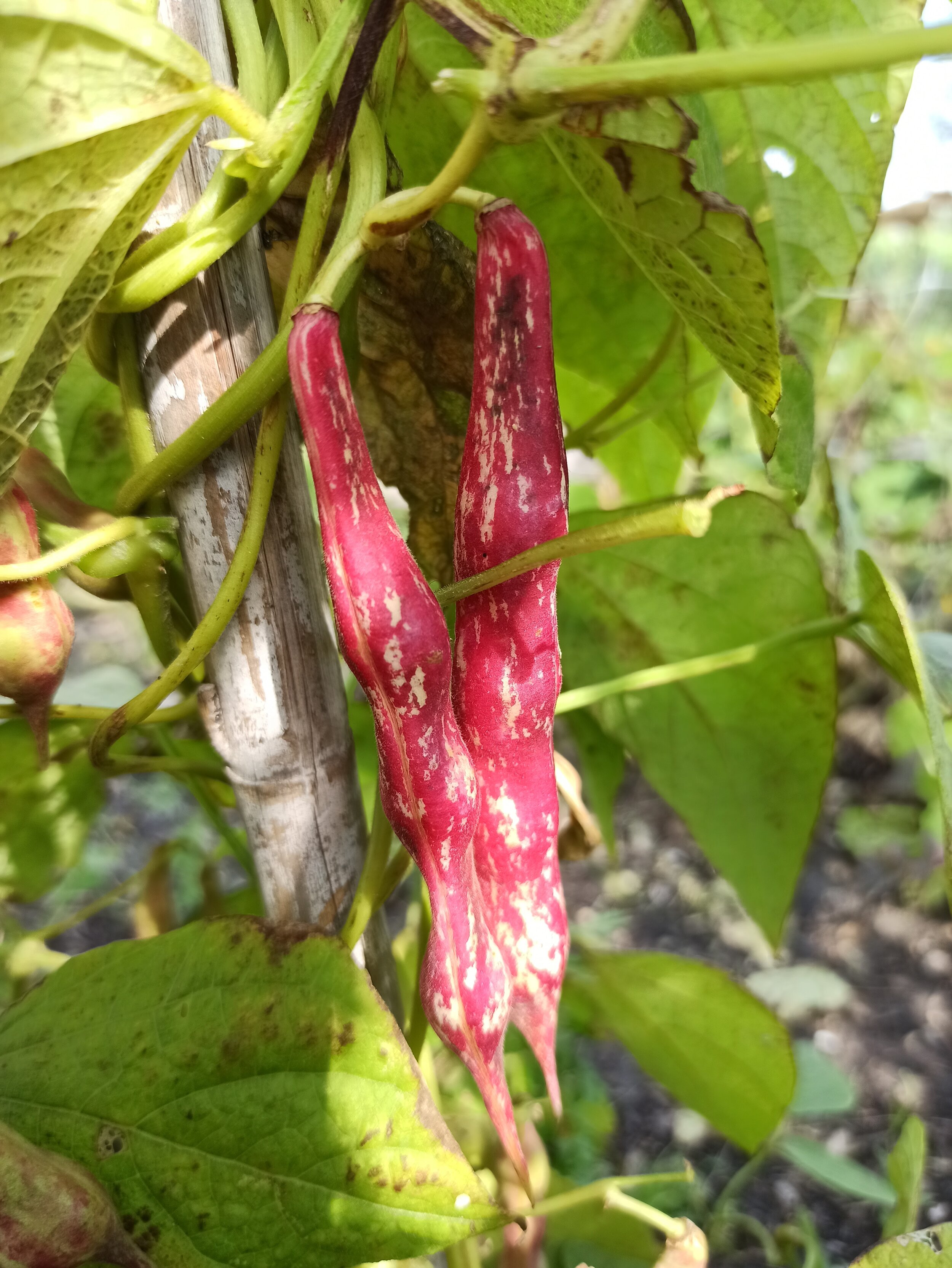Borlotti beans
Phaseolus vulgaris
Other names
Kievitsboon
A quick introduction
Dry beans are also known as shelling beans, or just beans. The Borlotti variety that we like to grow has pink and white speckles and can be eaten both dried and fresh. A dry bean is composed of a thick pod that contains multiple beans. To shell them, lightly squeeze the pod: it should open fairly easily, allowing you to run your finger through it to pop out the beans.
Storage
Borlotti beans will keep well in a paper bag in the fridge for a few days. They can also be fully dried and stored for much longer.
Season
Late summer through fall
Suggestions for preparation
Fresh shelling beans, contrary to their dried counterparts, do not need to be soaked overnight before cooking, and actually take only 20 to 40 minutes to cook. For a simple preparation, cover the beans with water and bring to a boil. To add flavour, add whole herbs, such as sage, rosemary, thyme and savory to the pot, as well as some onion, garlic and lemon slices. Top it all with a layer of olive oil. Some people say that adding salt to this braising liquid may toughen the skin of the beans, but we haven't had any issues with that. When the beans are fully cooked they can be served as is, or added to other dishes such as soups, pastas, or salads.
Recipes
If you've never tried making pasta with beans we suggest you give this recipe a try. Although it might seem strange to put beans and pasta together, Pasta e fagioli is a well-known dish in Italy that is appreciated all over the country. We love it and often have it as lunch at the farm on cold fall and winter days. Pasta with beans and greens is another variation on this classic pasta dish (replace the kale with other greens if you don't find kale in your box this week)
Beans, date and apple salad
Go for a classic Minestrone soup or a Soupe au pistou
Instructions on how to cook fresh beans

